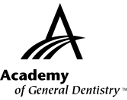|
Exercise No. 384
Subject Code: 017
Dental Materials
The 15 questions for this exercise are based on the article, Properties of dual-cure, bulk-fill composite resin restorative materials, on pages 68-73. This exercise was developed by Kim Capehart, DDS, MBA, PhD(c), in association with the General Dentistry Self-Instruction committee.
|
Reading the article and successfully completing the exercise will enable you to:
- identify the characteristics of composite resins;
- identify the various properties used to test traditional and new composites; and
- recognize the benefits of self-cured and light-cured composites.
|

